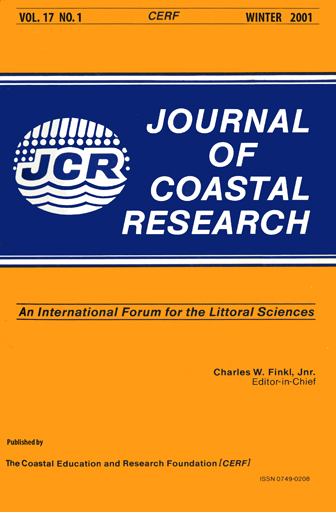A Logistic Regression Model of Hurricane Impacts in a Mangrove Forest of the Mexican Pacific
Keywords:
Coastal forested wetland, multinomial logit model, Pacific coast, Mexico.Abstract
Hurricane Rosa inflicted considerable damage to the mangrove forests of the Teacapan-Agua Brava Lagoon System of Mexico. Data collected from five transects indicate an overall reduction in stem density and basal area of approximately 31 and 51 percent respectively. Of the 1390 trees examined, only 44% remained well vegetated and 28% were found with their main stem broken or uprooted. Rhizophora mangle was the species least affected by the event with 65% of these trees found in a well vegetated condition in contrast to 34% for Laguncularia racemosa and 420/0 for Avicennia germinans. A polytomous logistic regression model was developed to further examine the predicted outcome, vegetation condition, by species, main stem condition and diameter at breast height (DBH). Rhizophora was excluded from the model and DBH was reserved as a continuous variable. The results from this multivariate approach indicate that the probability of a mangrove being found in a dead condition as compared to a well vegetated one is significantly influenced by the diameter and main stem condition but not by the species. As diameter increases, the odds that an intact tree will be classified as dead rather than in a well vegetated condition also increases. A broken or uprooted main stem also augments this probability but diameter and the uprooted condition interact to attenuate the odds. By comparing a poorly vegetated to a well vegetated outcome, the model again indicates that, separately, increased diameter, the condition of a broken or uprooted main stem all increase the odds of a less favorable outcome. More significant interactions were also recorded, including the interaction of species by both diameter and the uprooted condition. Although seedling counts suggest considerable recovery following the hurricane, Avicennia and Rhizophora dominated the numbers. Changes in light conditions, local topography and substrate conditions following this rare storm event may not currently favour the growth of Laguncularia seedlings.


